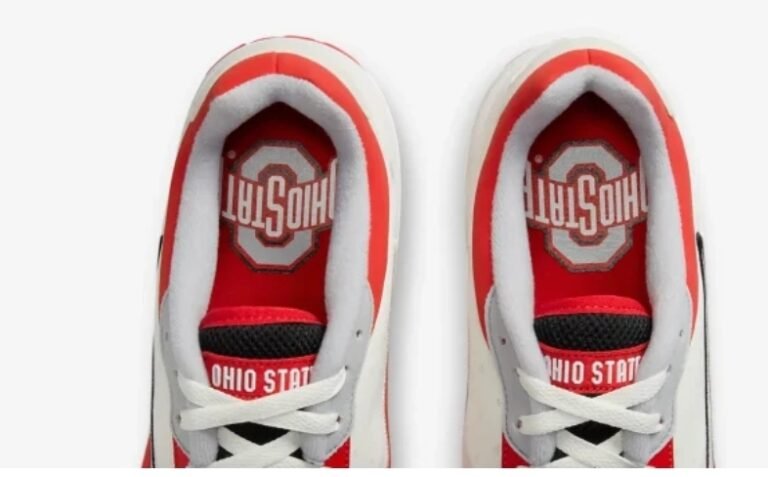Nike’s Ohio State Nike Air Max Shoes are currently on sale for an incredibly low price of $78. This deal might seem like a bargain for sneakerheads, sports fans, and collectors alike. However, it is worth considering what exactly is behind this dramatic price cut. While the savings sound enticing, the allure of discounted high-performance footwear isn’t always what it seems. Let’s break down this sale, the underlying reasons behind it, and whether it’s truly a steal or just another marketing tactic designed to lure in customers.
The Air Max line is renowned for its cutting-edge technology, sleek design, and long-standing association with premium athletic performance. The Nike Air Max is one of the most recognizable sneakers in the world, boasting air cushioning technology that revolutionized the footwear industry when it first debuted. Its combination of form and function has made it a favorite not only among athletes but also fashion-conscious individuals who want to make a statement. As a collaboration with Ohio State University (OSU), the design carries a unique appeal for fans of the Buckeyes, a beloved college football program with a storied history.
So why is this iconic shoe now priced at just $78? Could it be that Nike has overproduced the shoes, leading to a surplus in stock that they need to offload? Perhaps the sales haven’t been as strong as anticipated, and this steep discount is an effort to clear out the inventory before the next batch of designs is released. Or maybe this is a marketing gimmick to drive traffic to Nike’s online store or physical retail outlets by presenting a limited-time offer that creates a sense of urgency.
Critics of such sales argue that this tactic could be a way for Nike to manipulate consumer behavior by playing on the psychology of scarcity. The $78 price tag creates an illusion of a bargain, enticing buyers who might otherwise have hesitated to purchase the product at its original price. In reality, though, the marked-down shoes could simply be a way of clearing out old stock to make room for new, more expensive lines of shoes or to divert attention from other more expensive releases.
Moreover, there’s the question of quality. While Nike is undoubtedly a respected brand, some skeptics point out that massive sales like this might signal a decrease in quality. This could be due to cheaper materials being used or cutting corners in production to make the shoes more affordable. For those who expect top-tier quality for a signature line like Ohio State-themed shoes, these significant price drops may come with a caveat.
On the flip side, fans of Ohio State might argue that this sale offers them a rare opportunity to own a piece of memorabilia at an unbeatable price. For Buckeye enthusiasts, having Nike-branded shoes designed to reflect their team’s colors, logos, and culture at a fraction of the original price could be worth it, regardless of potential sacrifices in terms of quality. The emotional value tied to supporting their team and showcasing their school pride may outweigh concerns about manufacturing processes or long-term durability.
For Nike, this sale may simply be a strategy to capitalize on the massive fan base that surrounds both Ohio State and Air Max. It’s a calculated move to stay relevant and keep customers engaged with their products in a highly competitive market. Whether it’s about marketing, inventory management, or sheer opportunism, the truth remains that the low price tag doesn’t tell the whole story. Potential buyers should ask themselves: Is this a legitimate discount or merely an illusion designed to lure in unsuspecting fans?
In conclusion, the Ohio State Nike Air Max shoes on sale for $78 are a fascinating topic in the world of consumerism. While the price may seem too good to pass up, it’s essential to dig deeper into the motivations behind such discounts. From potential overproduction and marketing tactics to the quality of the product itself, there’s much more to consider than just a lower price. The offer may sound tempting, but discerning consumers will take the time to ask themselves whether the bargain is worth it, or if it’s just another piece of marketing magic in a long line of retail trickery.
